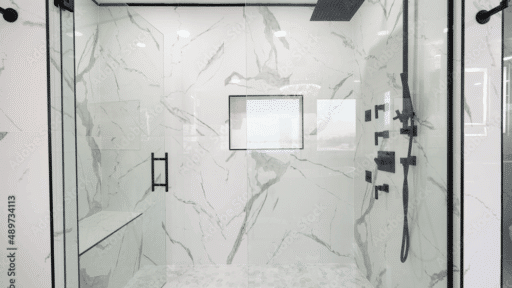Keeping a commercial building secure has never been more complex. From protecting sensitive data to ensuring employees feel safe walking through the door, today’s business leaders have a lot on their plates. The good news is that modern security solutions are smarter and more adaptable than ever before. They’re not just about keeping doors locked. They’re about creating safer environments, protecting digital and physical assets, and building trust with clients, patients, and staff. Let’s explore five key areas to consider when thinking about stronger security in your business space.
Upgrading Access Control Technology
The front door of a building is often the first line of defense, but in commercial settings, access control is about much more than keys and locks. Modern platforms let you decide exactly who can go where and when. Access control systems for small business locations are designed with scalability in mind, so a clinic or office with only a handful of employees can still benefit from the same type of technology that a larger hospital or corporate center would use.
These systems integrate digital credentials, secure databases, and real-time monitoring. Instead of trusting traditional physical keys that can easily be lost or copied, employees might use badges, codes, or even mobile apps to enter specific areas. The true strength of these systems lies in the way they connect with broader operational technology. When linked with medical record platforms or scheduling software, access control ensures that only authorized staff can reach sensitive spaces like storage rooms, labs, or IT hubs.
Addressing IT Challenges for Growing Businesses
As businesses expand, their digital footprints grow with them. This creates new opportunities, but it also creates new vulnerabilities. Many organizations discover that IT challenges start to multiply once they add more employees, more devices, and more systems. Each new endpoint is another potential entryway for cybercriminals.
For commercial buildings, the intersection of physical and digital security is particularly important. If your systems are connected, then a weak IT foundation can compromise the entire building. Scaling security is not just about adding more tools, it’s about ensuring those tools work together. For example, when an access control system connects to a cloud-based health record system, you need guarantees that both sides are secure. Failing to address this leaves businesses vulnerable to breaches that can damage trust and cause regulatory headaches.
Using Surveillance as a Preventive Tool
Surveillance isn’t new, but the way businesses are using it is changing. Instead of passively recording footage that only gets reviewed after an incident, modern surveillance integrates real-time analytics. Cameras can now detect unusual behavior, recognize patterns, and send alerts to security staff instantly.
In office buildings, it could be about tracking occupancy levels to comply with safety regulations. The advantage here is twofold. Incidents can be prevented before they escalate, and organizations gain better insights into how spaces are being used. Video data can even inform staffing decisions or help optimize building layouts. What was once purely a defensive measure is now part of broader strategy and planning.
Protecting Data and Networks Inside the Building
Physical security is only half the story. Commercial buildings are increasingly filled with connected devices that run everything from HVAC systems to patient monitoring tools. Each of these is part of a wider network that must be protected. A breach through a seemingly minor device could give an attacker access to sensitive medical or business data.
To address this, companies are implementing network segmentation, encryption, and continuous monitoring. This way, even if one system is compromised, it doesn’t automatically open the door to everything else. The result is a safer digital environment that supports daily operations while maintaining compliance with strict data protection laws.
Training Staff to be Part of the Security Team
Even the best technology fails if the people using it don’t understand how it works. Training employees to recognize risks and follow protocols is very important for security. In many cases, human error is the weak link, whether that’s holding the door for someone they don’t recognize or clicking on a suspicious link in an email.
By building security awareness into the culture of a workplace, leaders can create a shared responsibility model. Staff should know why access restrictions are in place, how to report concerns, and what steps to take during emergencies. In settings where stakes are especially high, this kind of training prevents breaches that could affect both client safety and regulatory compliance. Making people feel like active participants rather than passive bystanders not only reduces risk but also builds trust within the organization.








